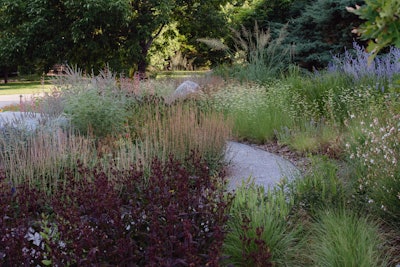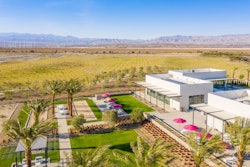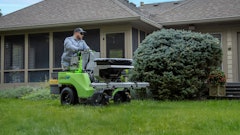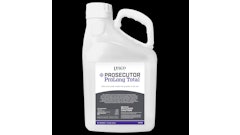
The Associated Landscape Contractors’ 2021 ELITE Gold Award for Residential Plant Design went to Tree of Life Landscapes’ well-deserving Lince Rossa project in Colorado. So, what set Tree of Life Landscapes’ design apart from the competition? The Lince Rossa project’s landscape designer, Johnny Moore, shares his experience working on the project.
The Power of Perennials
Tree of Life Landscapes has made its mark by using perennials in landscape designs. These robust plants are able to weather the Colorado environment while borrowing the colors and feel of the natural setting.
“I think perennial-driven design is becoming a thing a lot of people are doing now, but I think it's something that's still not really well known,” Moore says. “Not a lot of designers are really specializing in that.”
For the Lince Rossa project, the Boulder, Colo.-based residence sat on a hilltop where the land was subject to dramatic extremes between incredibly hot and frigidly cold or windy weather.
“The plants had to be able to tolerate some real extremes,” Moore says. “With those kinds of stressful factors and constraints, it caused the plant palette to become really unique.”
Mixed in with the perennials were shrubs and trees that were equally as hardy to survive the Colorado climate. Moore takes pride in the colorful combination of the plants and the distinctive aesthetic created when using perennials in designs.
Nature’s Touch
As with any residential landscape design, the customer’s vision is the driving force behind the design concept. The Lince Rossa project was no exception, Moore says.
“The client’s greatest overall vision was to reduce the sod and to add perennials,” he says. “A couple of other factors were to create something that was low maintenance, as well as being friendly and beneficial to wildlife and pollinators.”
The property backs up to a large, open space surrounded by fields and other natural areas. The client did not want to stray from the natural feel with the landscape design.
“Creating an environment in her front yard that was going to be welcoming and kind of an extension of that wildlife and climate was a big factor,” Moore says of the design process. “I'm always looking to create an aesthetically and environmentally pleasing place with the design, where it's beautiful, not just to the client, but also to the world around it.”
The client received a National Wildlife Federation certification for her natural landscape. This certification is awarded to residential yards where wildlife is able to rear young, pollinate or otherwise thrive. Brooke Forwood Photo
Brooke Forwood Photo
Challenges Accepted
Between the climate, supply shortages and the location of the landscape, the Lince Rossa project did come with its setbacks. The client specifically sought professional help because she had had a 50 percent survival rate of plants in the past. Brooke Forwood Photo
Brooke Forwood Photo
“Our client basically said ‘good luck’,” Moore recalls. “Fortunately, we did a lot better than a 50 percent survival of all our plants, but we did have some challenges. Some of that was due to sourcing limitations when we were installing and some availability shortages.”
To overcome these challenges, Moore’s team substituted known hearty plants under a one-year warranty and replaced them as needed.
Budget constraints also changed design plans for Moore’s team.
“We ended up scaling back the density of the plantings just due to budget,” Moore says. “We like to plant pretty densely because of long-term maintenance. The client had approximately 5,000 square feet of what we planted. That's just a lot of space to cover, so we did scale down and scale back the plants a little bit to fit the budget.”
Keeping Up Appearances
Upon completing the Lince Rossa project, Moore values the relationship Tree of Life Landscapes fostered with the client. Moore and his team take the time to check up on the current state of the garden and replace plants or do maintenance as needed. Brooke Forwood Photo
Brooke Forwood Photo
“I'll still go out there two or three times a year and walk our garden with her to talk about what's doing really well or what areas might need a little more attention,” Moore says. “My favorite part of the project was the day that we finished planting. There’s a reason behind why we put all these plants here, but you can't see it on day one. Going back throughout the past several years and seeing that garden come to full maturity, that was my favorite part about it.”
You Can, Too
Moore’s humble appreciation of the Lince Rossa project’s win showcased how deserving Tree of Life Landscape’s work was of the ELITE Gold Award. For other professionals looking to join Tree of Life Landscapes in the ELITE ranks, Moore suggests “crafting a thoughtful perennial design.”
“The more time you spend getting to know plants - how they're going to live throughout the year, what their cycles are, how they can fit together texturally, their bloom times and their colors - the richer and greater depth your plant design is going to have,” Moore says.
In addition, Moore is an advocate for planting in accordance with your region. Using local plants and resources can create beautiful landscapes that are meant to thrive in specific climates and highlight the identity of the region.
“If you were to be dropped in any city in North America, and you stood on a street corner and looked at the landscape, would you know where you were? The odds are that you might not know because they all look similar,” Moore explains. “Everybody is trying to create the same look, but their designs should instead be reflective of the regional environment and plants which make that the place people want to live.”




















